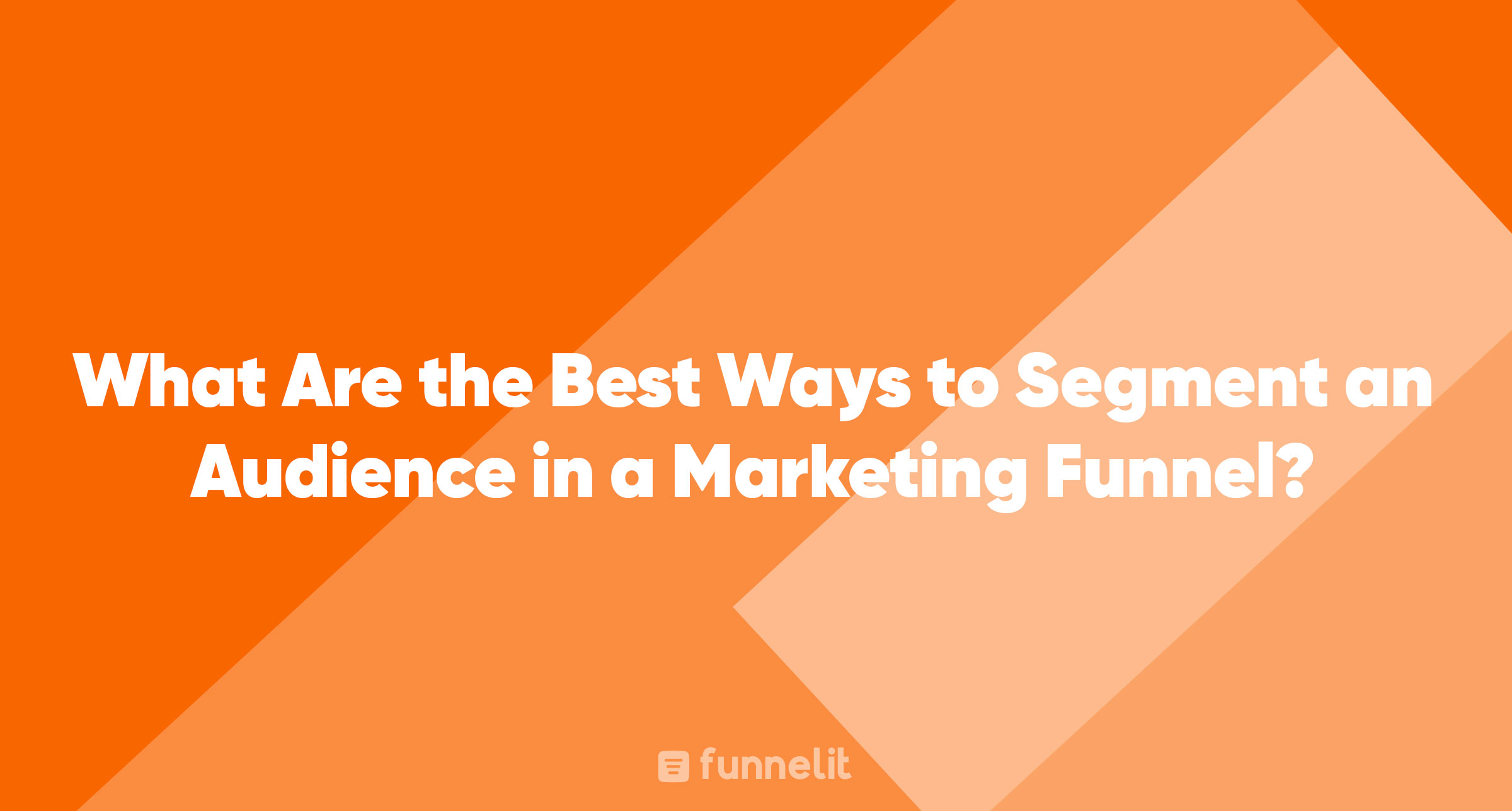Understanding your audience is crucial. To effectively engage with your target audience, you need to segment them into smaller, more specific groups. This segmentation allows you to tailor your messaging, products, and services to provide a personalized customer experience. But what are the best ways to segment an audience in a marketing funnel? In this comprehensive guide, we will explore various methods and techniques to help you effectively segment your audience at each stage of the marketing funnel.
Understanding the Marketing Funnel
Before diving into audience segmentation, it's essential to have a clear understanding of the marketing funnel. The marketing funnel represents the journey that potential customers go through from initial awareness of your brand to making a purchase. It consists of several stages, including awareness, interest, consideration, intent, evaluation, and purchase. At each stage, your goal is to guide the customer through the funnel and ultimately convert them into a paying customer.
Importance of Audience Segmentation
Audience segmentation plays a vital role in the success of your marketing campaigns. By dividing your audience into specific segments, you can create targeted messages that resonate with their unique needs, interests, and preferences. This personalization enhances the customer experience, increases engagement, and ultimately leads to higher conversion rates. Additionally, audience segmentation allows you to allocate your resources more efficiently by focusing on the segments that are most likely to generate revenue.
Demographic Segmentation
Demographic segmentation is one of the most common and straightforward methods of audience segmentation. It involves dividing your audience based on demographic factors such as age, gender, income, occupation, education level, and location. Demographic segmentation provides valuable insights into the characteristics and preferences of different customer groups. For example, a clothing brand may target different age groups with specific product lines tailored to their style preferences.
Psychographic Segmentation
Psychographic segmentation focuses on the psychological aspects of your audience, including their values, attitudes, interests, and lifestyles. This segmentation method allows you to understand the motivations and aspirations of your target audience, enabling you to create personalized messages that resonate with them on a deeper level. For instance, a travel agency may target adventure enthusiasts who value experiences and exploration.
Behavioral Segmentation
Behavioral segmentation involves dividing your audience based on their actual behaviors and actions. This segmentation method considers factors such as purchase history, website interactions, engagement with marketing campaigns, and response to specific offers. By understanding how your audience behaves, you can tailor your messaging and offers to align with their preferences and increase the likelihood of conversion.
Geographic Segmentation
Geographic segmentation involves segmenting your audience based on their geographic location. This segmentation method considers factors such as country, region, city, or even specific neighborhoods. Geographic segmentation is particularly useful for businesses that have location-specific offerings or want to target customers in specific areas. For instance, a restaurant chain may tailor its marketing messages and offers based on the preferences and tastes of customers in different cities.
Technographic Segmentation
Technographic segmentation focuses on the technology and digital tools that your audience uses. This segmentation method considers factors such as device preferences, operating systems, software usage, and online behaviors. Technographic segmentation helps you understand how your audience interacts with technology, allowing you to tailor your digital marketing efforts accordingly. For example, a software company may target customers who use specific operating systems and devices compatible with their product.
Firmographic Segmentation
Firmographic segmentation is primarily used in B2B marketing and involves segmenting your audience based on firmographic factors such as industry, company size, revenue, and location. This segmentation method helps you identify the specific needs and pain points of different businesses and deliver targeted solutions. For example, a software company may target small businesses in the healthcare industry with a solution tailored to their unique requirements.
Combining Segmentation Methods
While each segmentation method provides valuable insights into your audience, combining multiple methods can lead to even more precise and targeted segmentation. By layering different segmentation criteria, you can create highly specific audience segments that align with your marketing objectives. For example, you can combine demographic and psychographic segmentation to target young, environmentally conscious consumers who value sustainability.
Tools and Techniques for Audience Segmentation
To effectively segment your audience, you need access to the right tools and techniques. There are numerous tools available that can help you collect and analyze data to create meaningful audience segments. Customer relationship management (CRM) software, data analytics platforms, and customer surveys are just a few examples of tools that can assist in audience segmentation. Additionally, techniques such as customer interviews, focus groups, and data mining can provide valuable insights into your audience's preferences and behaviors.
Conclusion
Segmenting your audience is a crucial step in developing an effective marketing strategy. By dividing your audience into smaller, more specific groups, you can create personalized messages, products, and services that resonate with their unique needs and preferences. Whether you choose to segment based on demographics, psychographics, behavior, geography, technology, or firmographics, the key is to understand your audience and deliver targeted messages that provide value. By implementing effective audience segmentation techniques, you can enhance the customer experience, boost engagement, and drive higher conversion rates throughout the marketing funnel.
